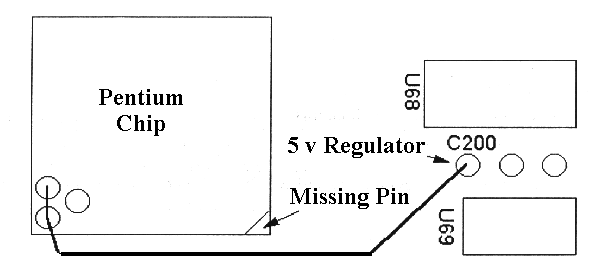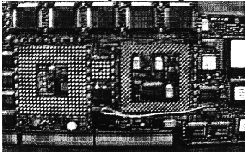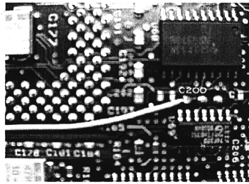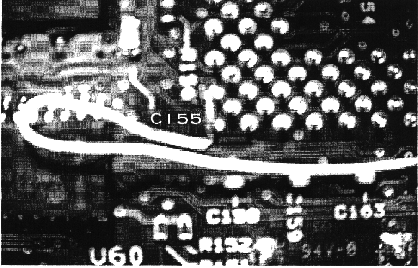|
Upgrading P90 Complex
I would like to thank Aron Eisenpress for sending me this
bit of trivia. Aron is not responsible (nor am I) if you screw up your
P90 complex doing this. Please read the disclaimers before proceeding.
This modification voids any warantee or service contract that you have
left for your PS/2 8590 / 8595 /9590 / 9595, or Server 500. I am getting
closer to scanning my P90 complex for better images...
Pentium® Overdrive 180 Mhz upgrade from 90 Mhz
Pentium® processor complex in IBM PC Server 500 5/390
Disclaimer
Modifying your processor complex with these instructions will void
your warranty and may cause irreparable damage resulting in a non-functioning
processor complex if performed incorrectly. There are no warranties expressed
or implied. Modify at your own risk. (Manufacturers warranty on newly purchased
PC Server 500's was usually three years depending on country of purchase.
Check your warranty information if concerned or unsure. Optional service
contracts may have altered or extended your period.)
Introduction
The following instructions can assist you in modifying the 90Mhz Pentium
processor complex that was originally manufactured in the IBM PC Server
500 System390 so that you can use the Pentium® Overdrive 180Mhz with
MMX chip. If you unplug the Pentium® 90Mhz chip from the complex and
plug in the 180Mhz Pentium® Overdrive without this modification, you
will experience two problems:
I. The electric fan that cools the Pentium® Overdrive chip will
not have power to turn the blades. You will 'cook" (burn out) the Pentium®
Overdrive due to inadequate cooling. (The 90Mhz Pentium® chip uses
a heat sink instead of an electric fan.)
2. Without providing 5 volts to the overdrive chip, the chip will run
at about 25Mhz which is slower than the installed 90Mhz chip.
Directions
* Locate and have a working reference diskette for the PC Server 500
available. You will need it if you use a different processor complex board
than the one currently installed. You should not need it if you remove,
modify, and replace the same processor complex board that is currently
installed. Better to locate and have it ready than to not have it.
* The processor complex does not use a ZIF (zero insertion force) socket
for the Pentium® processor. The old 90Mhz processor must be carefully
removed. (A good quality jewler's screwdriver was useful to the author
in starting to pry the chip from the socket and then working around the
perimeter of the chip increasing in small increments. Insert the tip of
the screwdriver between the socket and the chip. Use only the socket surface
and not other chips or edges on the board as fulcrums for prying.)
*Solder an insulated wire from the +5 volt regulator to the two unused
pins on the Pentium® 'internally no-connect'.
* The two pins are technically labeled AN01 and AN03. There are no
labels visible that say AN01 or AN03.
After the wire has been soldered to all three points and allowed to
cool, carefully align all pins of the new processor to their respective
holes taking note of the key (missing pin on one corner). Carefully push
the new processor into the holes. The new processor pins may be longer
than those of the old processor and therefore there may be a gap between
the bottom of the new processor and the socket surface.
* Reinsert the processor complex into the PC Server and reconnect the
signal wire. Power on the server and assure that the fan on the Pentium
Overdrive processor is turning (a flashlight aimed at the fan when power
is applied will probably be necessary).
* You will note that the LED display on the front of the PC Server
500 will say "60Mhz" instead of "90Mhz." This is normal.
Bottom side of 90 Mhz processor complex IBM FRU PIN 06H3739 "CUBRUN"

Modify at your own risk! Modification will void warranty.
Photo of back of complex showing modification. 'Ihere is no significance
to the loop in the wire toward the left. The wire could have been shortened
to eliminate the loop.

Closeup of the connection to the 5 volt regulator

Closeup of connection to pins on the Pentium® connectors

There is no significance to the loop in the wire toward the left. The
wire could have been shortened to eliminate the loop.
Trademarks Pentium® is a registered trademark of Intel Corporation.
9595 Main Page
|



